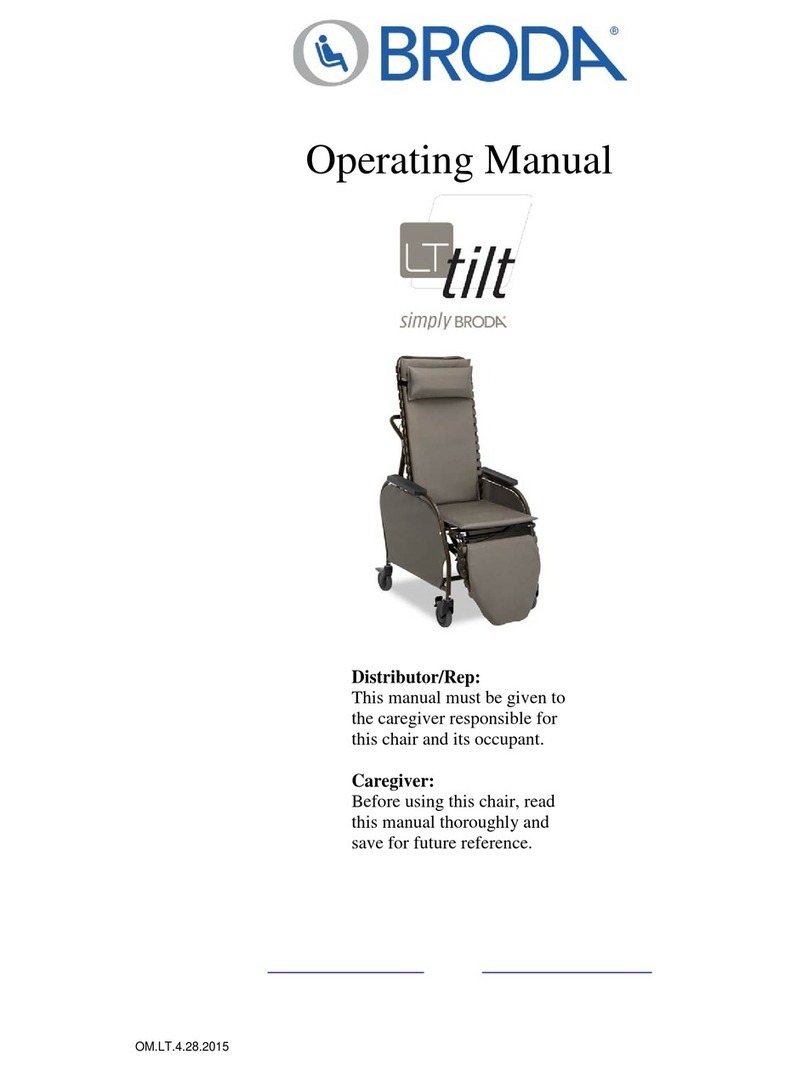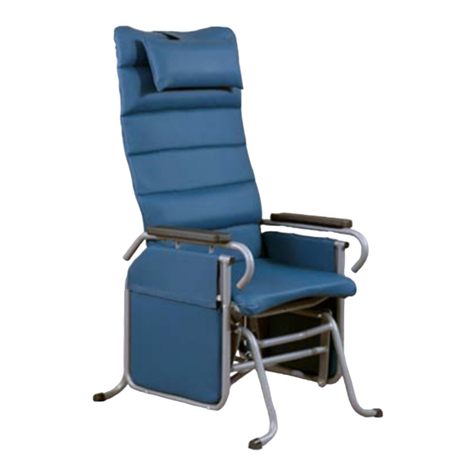
2.3.1 Location of Chair — “Danger of Tipping or Falling Objects”
We recommend that when the user has been moved to their
destination, the chair is placed where the user cannot reach handrails
or other objects, fixed or movable. This is to prevent the user from
pulling the chair over or pulling themselves o the seating surface
and to prevent the user from pulling movable objects onto the chair
and themselves.
We recommend that the chair be used in a supervised area to
prevent untrained individuals (e.g., caregivers or third parties) from
unauthorized operation, movement, or unsafe actions. These actions, if
not prevented, put the chair at risk of tipping or damage to the chair.
We recommend that a chair only be located on a level surface to
minimize the risk of tipping over.
2.3.2 Transport Wheels - “Danger of Tipping”
The transport wheels found on the rear of the Tranquille Auto
Locking Glider chair are for ease of transporting an unoccupied chair.
Do not transport the Auto Locking Glider chair while it is occupied.
Doing so could cause the chair to tip, causing serious injury to the
user, caregiver or third party
2.3.3 Re-Positioning of The User - “Danger of Clamping”
The Serinity Family of Auto Locking Gliders oers the benefits of
height adjustable arms. Before movement of the arm height, ensure
the users’ and caregivers’ body are clear of all pinch points.
2.3.4 Unintended Movement - “Danger of Falling or Collision”
We recommend Broda chairs for indoor use within a healthcare
environment and where there is not enough slope to cause the chairs
to move unaided. Chairs used where the surface is uneven or sloped
are at risk of unintended movement and could become a serious
danger to the user, caregiver(s), or a third party. We recommend that
Broda chairs are located away from stairwells, elevators, and exterior
doorways within a healthcare environment.
2.3.5 User Clothing — “Risk of Injury to the user’s Skin”
We recommend that users only be seated while they are fully
2.3 Hazards
SAFETY REQUIREMENTS (CONT.)





























